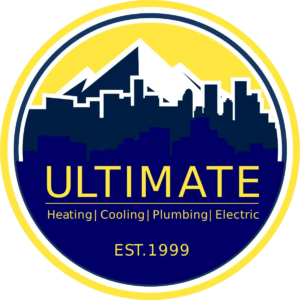The Denver metro area has 1.4 million households and a wide range of home types, from sub-500-square-foot micro apartments to three-floor Colonial Revival style houses. There are also thousands of building permits issued in Denver each year.
Whatever type of house you have or are planning to build, it’s important to ensure that you get the correct type and size of HVAC installed. Read below to find out why using accurately sized heating and cooling equipment is essential and the benefits of working with a qualified HVAC contractor.
Types of Residential HVAC Systems
When installing a new residential HVAC system, homeowners typically choose one of four types:
Split systems store the compressor and condenser in an outdoor cabinet. Indoors, there’s another cabinet holding the evaporator coil. An air handler sends air through the duct system.
Hybrid split systems use two sources of power to heat and cool a home, such as a propane-powered furnace and an electric heat pump.
Packaged heating and cooling setups house all components in one metal cabinet. The unit is typically placed on the roof or a cement slab outside. Although the unit is outdoors, an indoor thermostat controls it. Packaged HVAC is ideal for homes with limited indoor space or no basement or crawlspace.
Ductless mini splits include an indoor wall or ceiling-mounted air handler and evaporator coil, as well as an outdoor compressor unit and condensing coil. A conduit links the two units and contains the drain line, refrigerant tubing, and control cables. Unlike traditional heating and cooling systems, this setup has no ductwork and relies on the indoor unit to distribute the hot or cold air.
Whichever setup you move forward with, ENERGY STAR certified products are a wise choice. Light commercial equipment, for example, is approximately 6% more efficient and saves over $2,000 over the life of the product if it’s ENERGY STAR certified.
Dangers of a Wrongly Sized Residential HVAC System
Using correctly sized HVAC equipment in your home is important. Failing to do so risks:
Overpaying on electricity bills is guaranteed when using improperly sized HVAC equipment. Undersized systems have to run for longer to reach the desired temperature. Likewise, larger setups consume more energy when starting their cycles compared to smaller ones.
Short-cycling is when your furnace gets stuck in a continual loop of overheating, automatically shutting down to cool and restarting. Air distribution in undersized equipment is too slow, while oversized ones are too fast. This creates uneven indoor temperatures and thermostat temperature readings, causing your system to shut down and restart. Short-cycling is also caused by clogged air filters, refrigerant and duct leaks, and wrongly calibrated thermostats.
Reduced lifespan of HVAC equipment is then caused by short-cycling, which generates excessive wear and tear on the compressor and other internal components. A well-maintained and properly-sized setup should last for 15-20 years. However, overworked systems could fail in less than a decade.
How an Engineer Designs Correctly Sized Residential HVAC Systems
A professional engineer uses the Manual JSD process to correctly size an HVAC system. The Air Conditioning Contractors of America (ACCA) developed the protocol to ensure technicians install only the most optimal HVAC equipment in a home.
The letters J, S, and D refer to individual manuals published by ACCA that cover one of the following topics: heating and load calculations, sizing and selection, and duct design. Read our blog to learn more about the benefits that homeowners get from the Manual JSD process.
An In-House HVAC Engineer Is Best
Building a new home, or renovating an old one, often involves working with multiple professionals such as carpenters, drywallers, roofers, and electricians. HVAC engineers are also an integral part of the building and renovation process.
Housing contractors and design firms frequently outsource project work to third-party companies, including companies that design heating and cooling systems. Sometimes these companies are located out of state and handle hundreds of clients with the sole intention of getting the design permitted. This means there’s a risk that a third-party designer might choose a wrongly sized setup, as they rarely have time to consider the actual performance of the system or even the feasibility of installing it. Furthermore, these teams rarely communicate with anyone directly involved in the building or design of the residence. As a result, there’s a high risk of overlooking flaws.
By working with an in-house heating and cooling engineer, you’ll get the assurance that whatever system is installed is the most accurate for your specific home. Plus, if the building design changes during the planning phase or there are discrepancies between plans and the construction, an in-house HVAC specialist can precisely and quickly make changes without delaying the project.
Ultimate Heating and Cooling offers the most efficient residential HVAC designs in Denver, thanks to our team of experienced in-house engineers and designers. Whether you’re in the pre-design phase or your construction is already underway, contact us today to discuss your residential HVAC design.


